Making homemade yeast rolls sounds complicated, but in reality, it is much easier than you imagine. Bread machine dinner rolls are surprisingly simple to make and the perfect way to elevate any meal. Give them a try, and I think they will become your go-to comfort food just like they are mine.
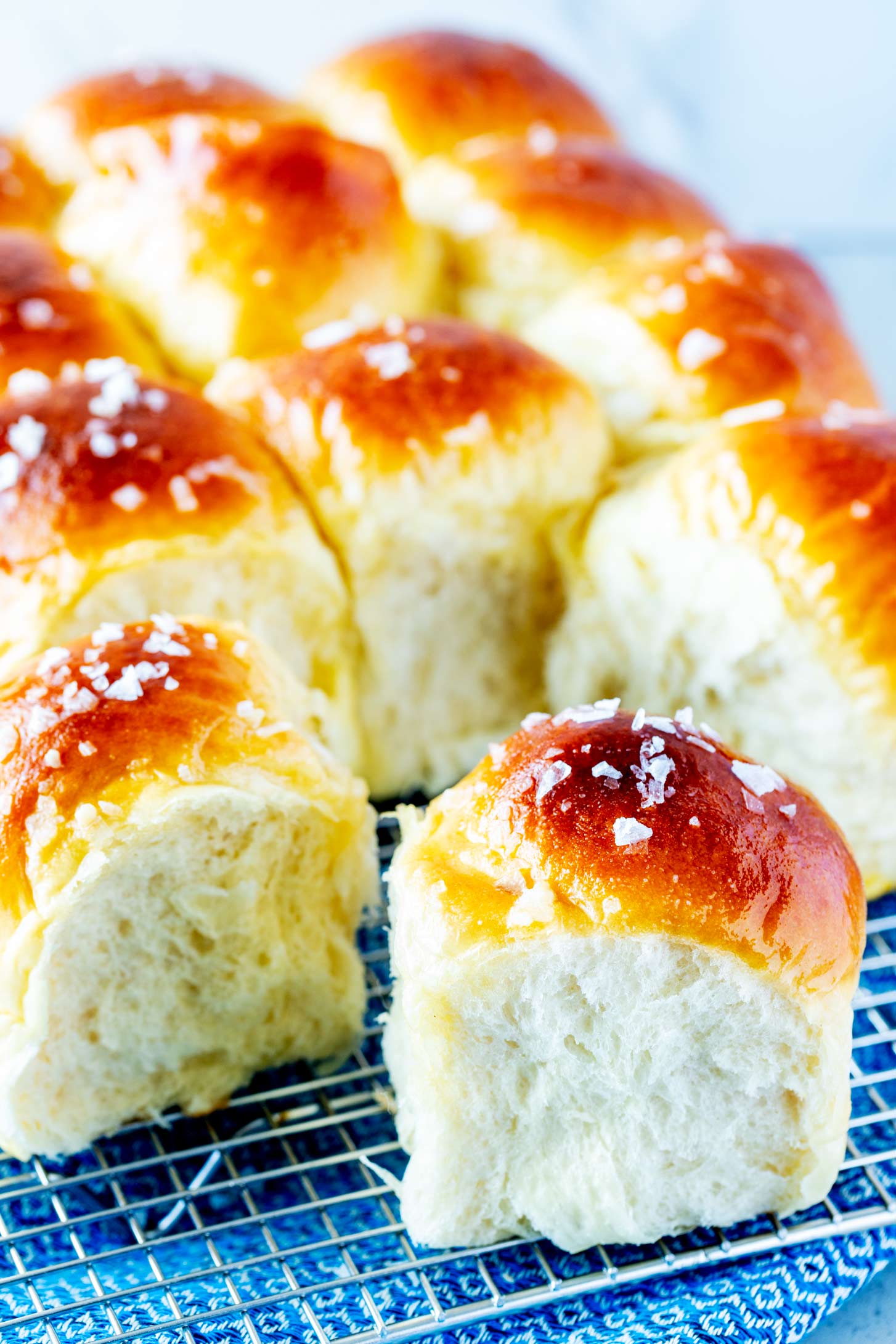
Homemade dinner rolls have long been a staple of special occasions.
While the process of making traditional homemade dinner rolls can be time-consuming and labor-intensive, you don't need to let that stop you from enjoying freshly-baked bread at your next gathering.
Instead, try using a bread machine to make the dough!
Bread machines make the process much easier by automating much of the kneading and first rising part. (This recipe is so easy that my 18-year-old son makes it at least once a week.)
In this blog post, we'll take you through step-by-step how to make bread machine dinner rolls - from ingredients selection to baking tips - so that everyone can share in the joy of warm, fluffy dinner rolls for their next meal.
Ingredients

- Milk: I recommend using whole milk to make bread maker dinner rolls as the fat in the milk helps the texture of the rolls.
- Egg: Use a large egg. Make sure you beat it before adding it to your bread machine.
- Honey: I like to use honey as a sweetener in these dinner rolls. It adds a nice touch of sweetness without overpowering the other flavors in the rolls.
- Shortening and butter: Shortening helps with the texture, while butter helps with the flavor. If you don't have shortening, you can use all butter.
- Salt: Don’t omit the salt. Without it your bread will be too dense - not to mention tasteless!
- Flour: For the best results, use bread flour. It has a higher protein content which is important of the structure of the rolls.
- Yeast: I like to use instant yeast (also called bread machine yeast) in these dinner rolls. If you don't have instant yeast, you can simply replace it with regular active dry yeast - just use 25% more.
- Garlic: We like to brush our rolls with garlic butter, but this is optional.
- Salt: Finishing with a sprinkle of flaky salt (such as Maldon sea salt) adds a nice pop of flavor.
Tips & Tricks for Making This Bread Machine Rolls Recipe
- I rely on instant yeast (or bread machine yeast) for this recipe. If you can’t find it, you can substitute active dry yeast, but you will need to use 25% more. (About 2.8 teaspoons.)
- I don’t recommend substituting another liquid for the milk - it is key to tenderizing the crumb and weakening the gluten structure. Also, the proteins in it (along with the egg wash) help contribute to the browning. If you are dairy free, you could substitute a nut milk but there will be a deterioration in texture.
- Don’t “punch” the dough down. You want to shape with a more gentle hand. You can be firm, but punching it can work out too much air. Instead, gently press on it with your hands.
Serving Suggestions
These dinner rolls are the perfect side to almost any meal.
Serve them with Baked Spaghetti with Ricotta, Instant Pot Chili Mac, or Meatball Casserole.
For a meaty main, try Picanha Roast paired with Slow Cooker Sweet Potatoes and Instant Pot Green Beans.
Frequently Asked Questions
Should I use bread flour or all-purpose flour for dinner rolls?
I recommend using bread flour when making dinner rolls, because it has a higher protein content than all-purpose flour. This can help to create a light and fluffy texture in your rolls, as well as a nice crusty exterior.
Why are my dinner rolls not light and fluffy?
If you make this recipe as written, your rolls should be light and fluffy. That being said, there are a few factors that can impact the texture of your rolls.
One important consideration is the type of flour you use. As previously discussed, I recommend using bread flour to create the best texture when making yeast rolls in the bread machine.
Using skim or low-fat milk can make your rolls less tender because the fat in the milk works to tenderize the bread.
While you can omit the shortening (using all butter instead), it may cause your bread to be less fluffy. This is because shortening coats the proteins in flour more efficiently than butter, thus creating superior tenderness.
How do I make my breadmaker bread soft?
There are a few things that you can do to make your breadmaker bread softer.
The first is to use bread flour. Additionally, it is important to follow the recipe closely and avoid overworking the dough. Finally, adding ingredients like honey, milk, or butter will make your bread softer and more tender.
Tools Needed to Make
As an amazon associate, I earn from qualifying sales.
- Bread Machine
- Pastry Mat
- Parchment Paper
- 2 ¾ quart baking dish
- Silicone Brush
Storage
Store leftover Bread machine yeast rolls at room temperature for up to three days. I don’t recommend refrigerating leftover bread because the refrigerator dries bread out.
For longer storage, freeze the rolls on a parchment-lined baking sheet and then transfer them to a freezer bag. Freeze for up to three months.
Thaw at room temperature and then reheat in the oven.
Step By Step
For the full recipe with measurements, see the recipe card at the bottom of the post.
First, start by placing the ingredients in your bread machine pan in the order they are listed in the recipe - milk, egg, honey, vegetable shortening, butter, salt, flour, yeast, and egg.
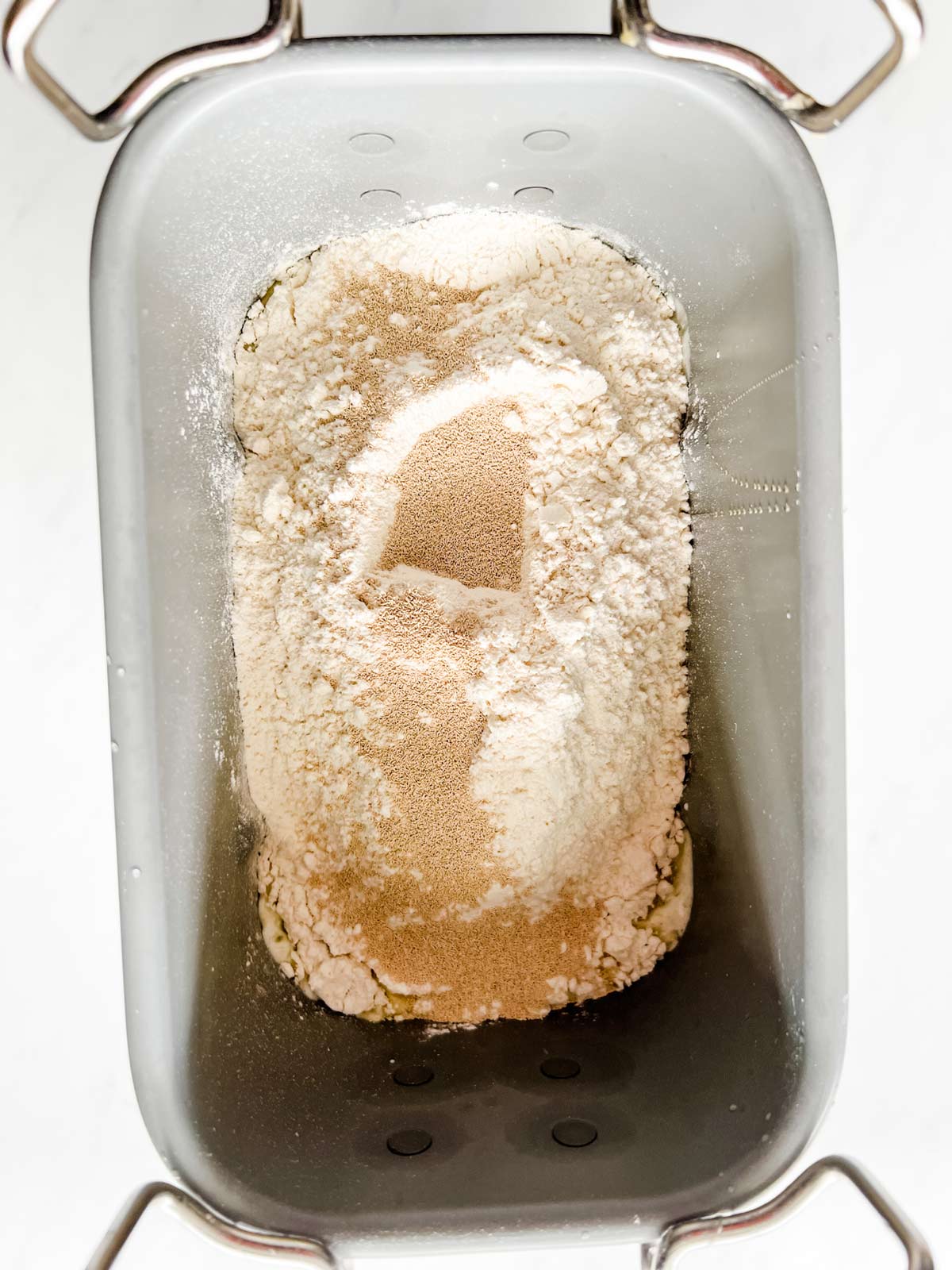
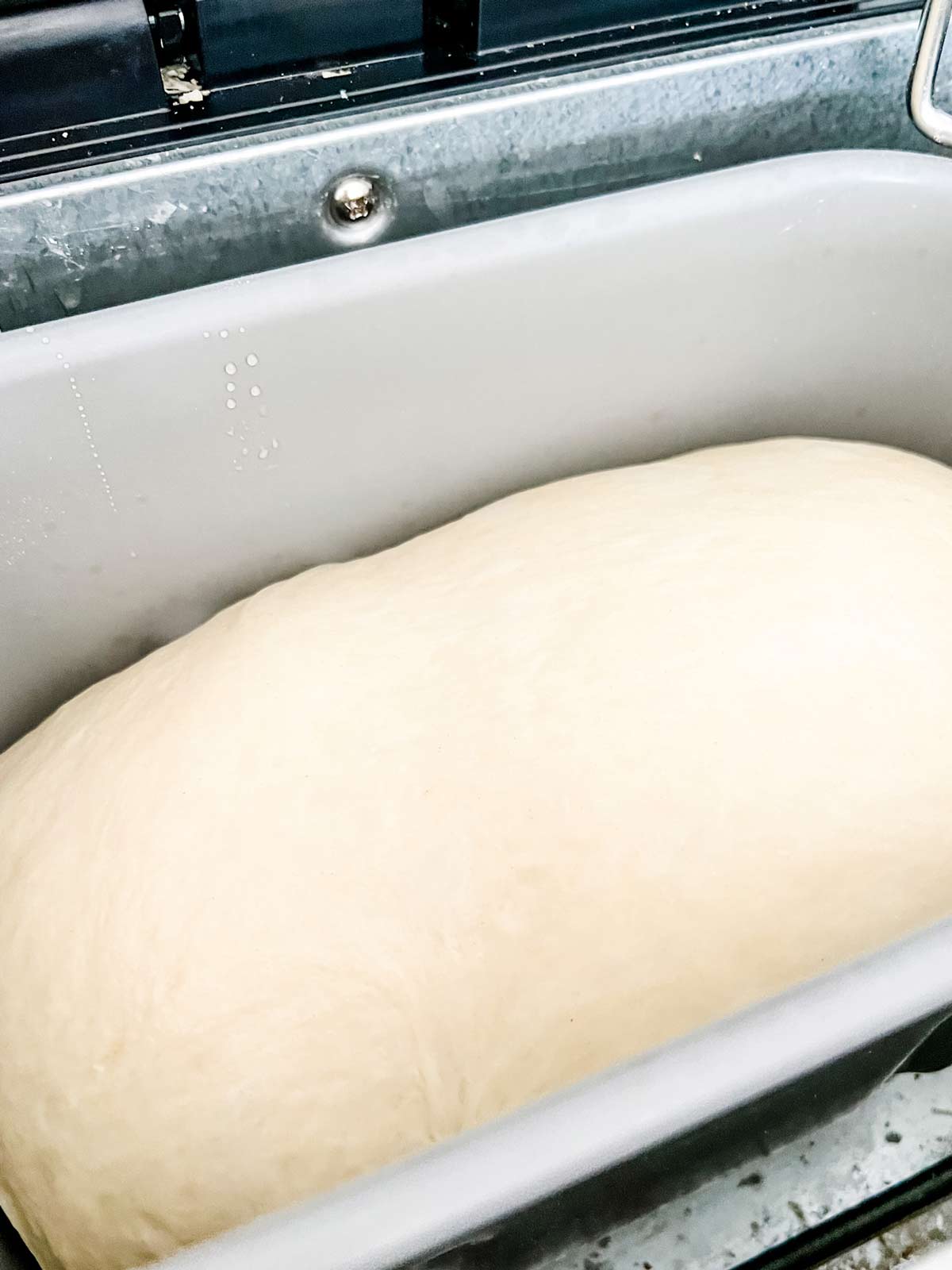
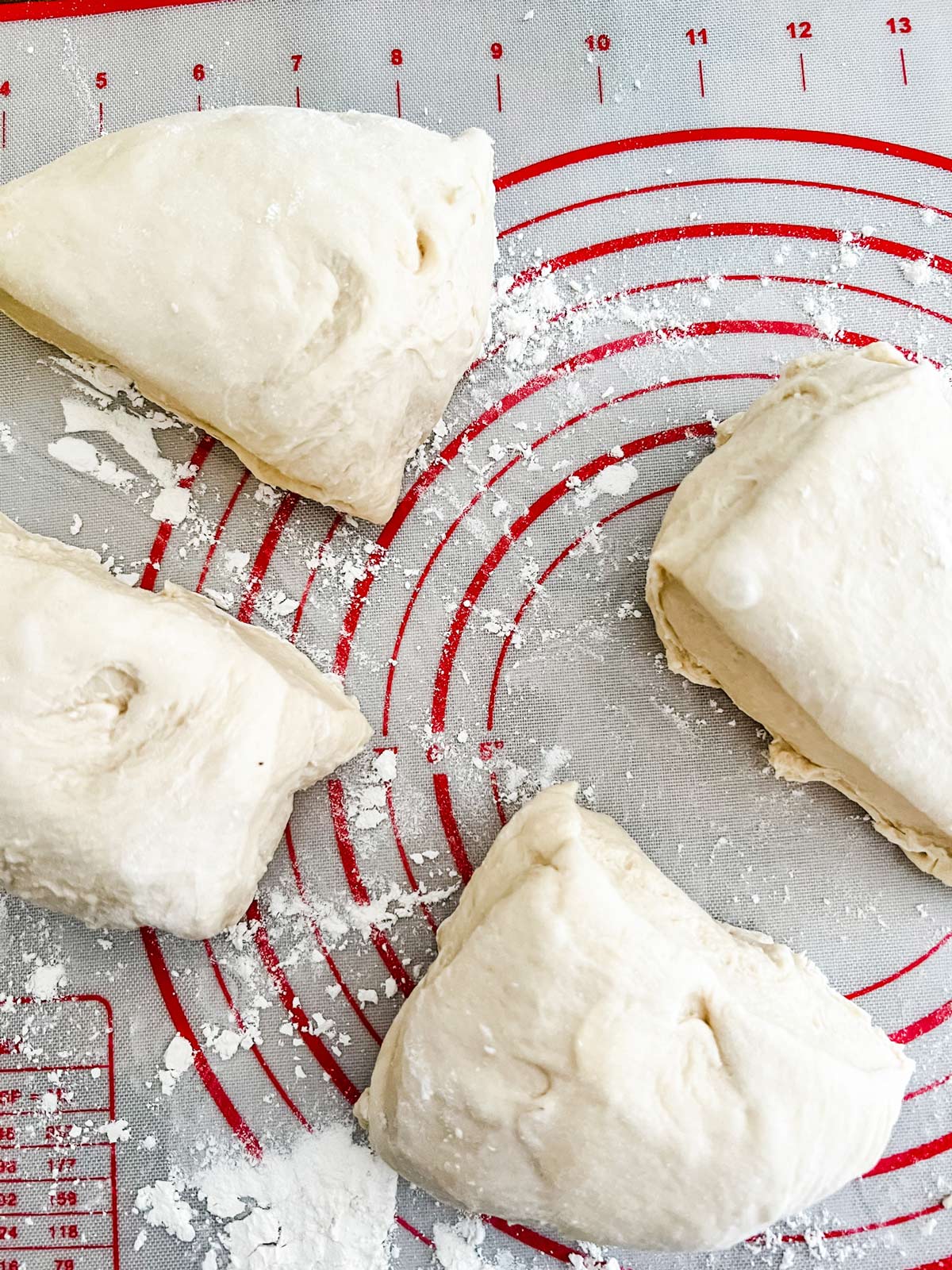
Select the dough cycle and process according to your bread machine’s manufacturer’s instructions.
Line a 2 ¾ quart baking dish with parchment paper.
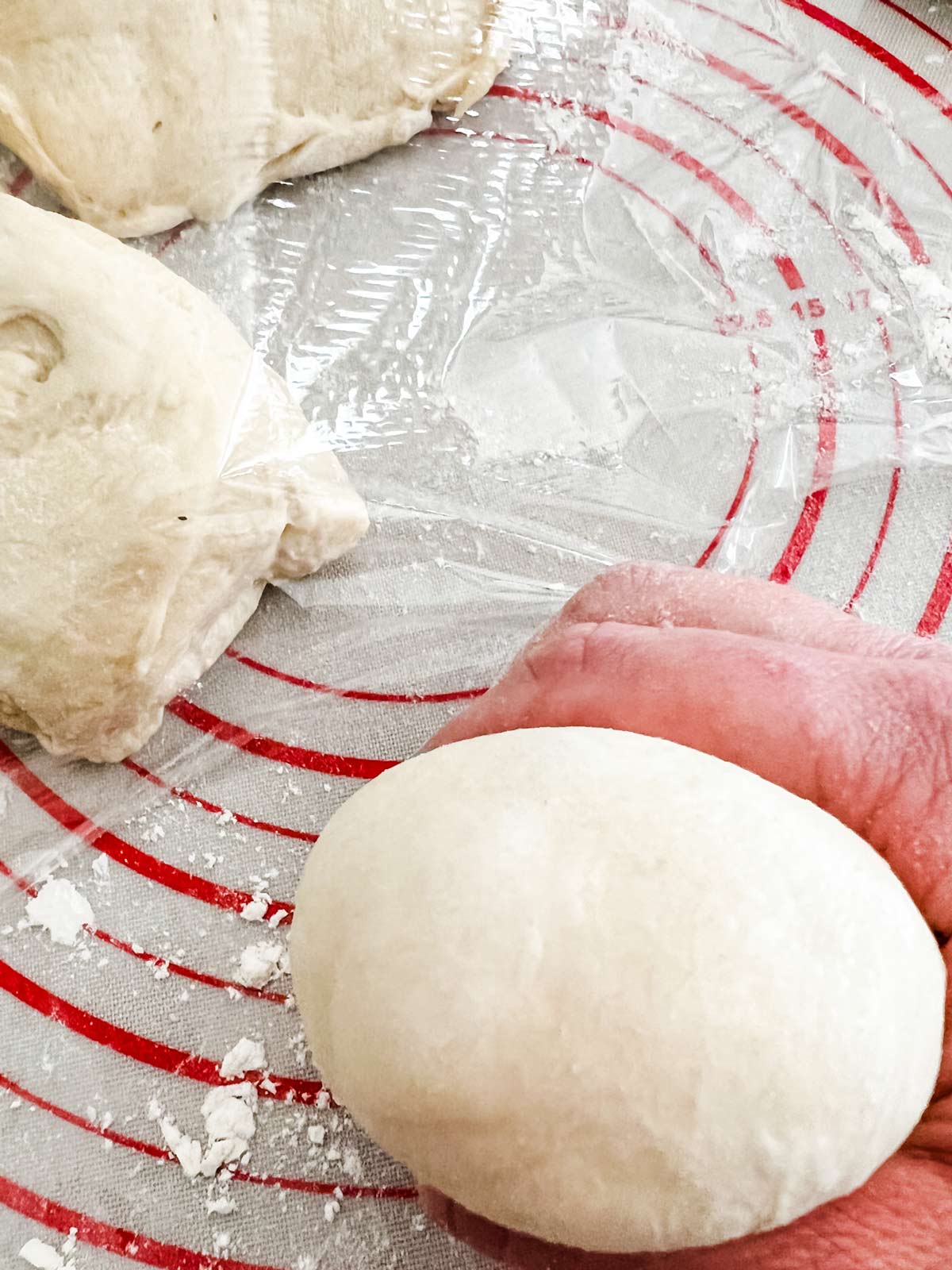
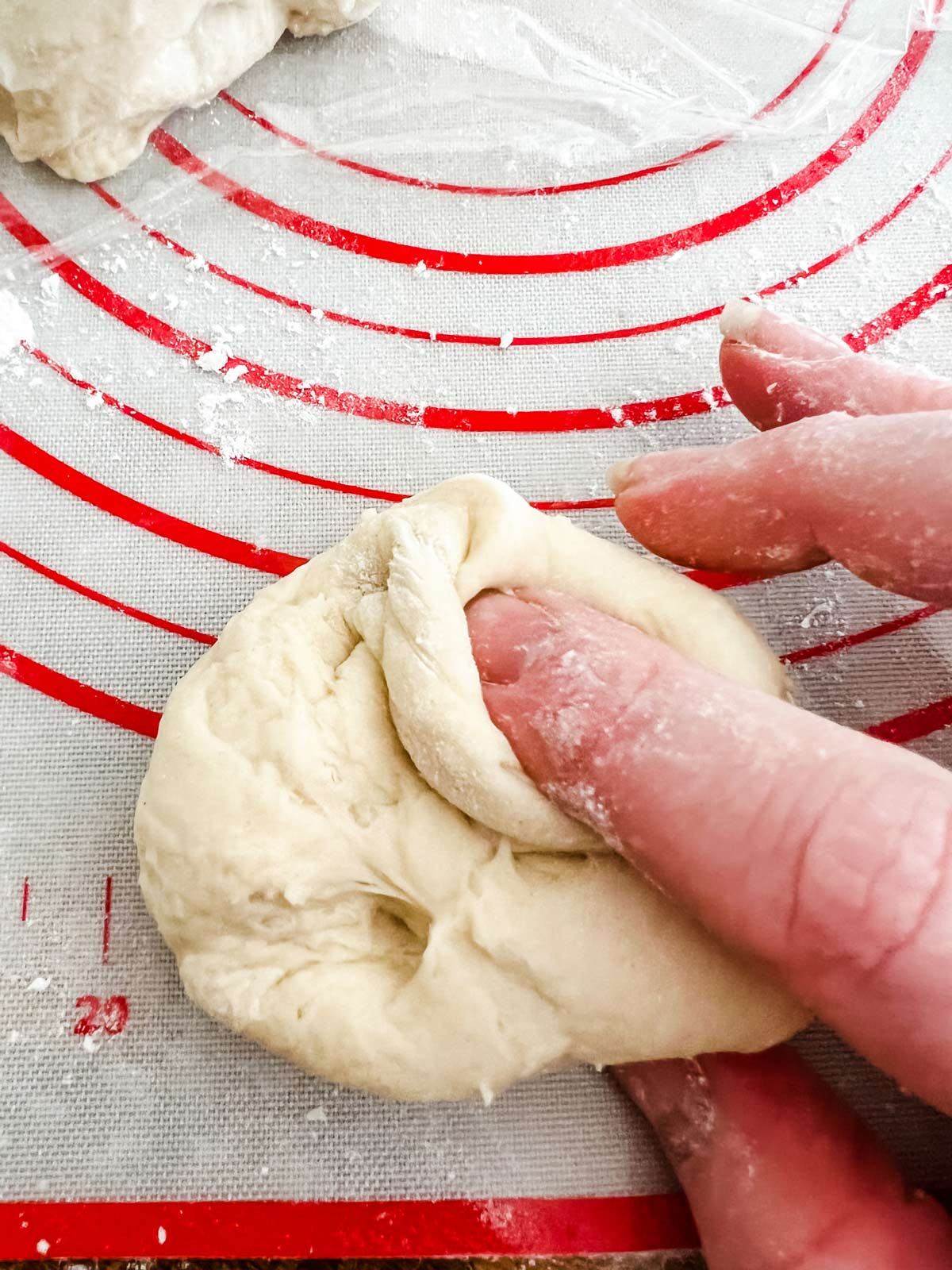
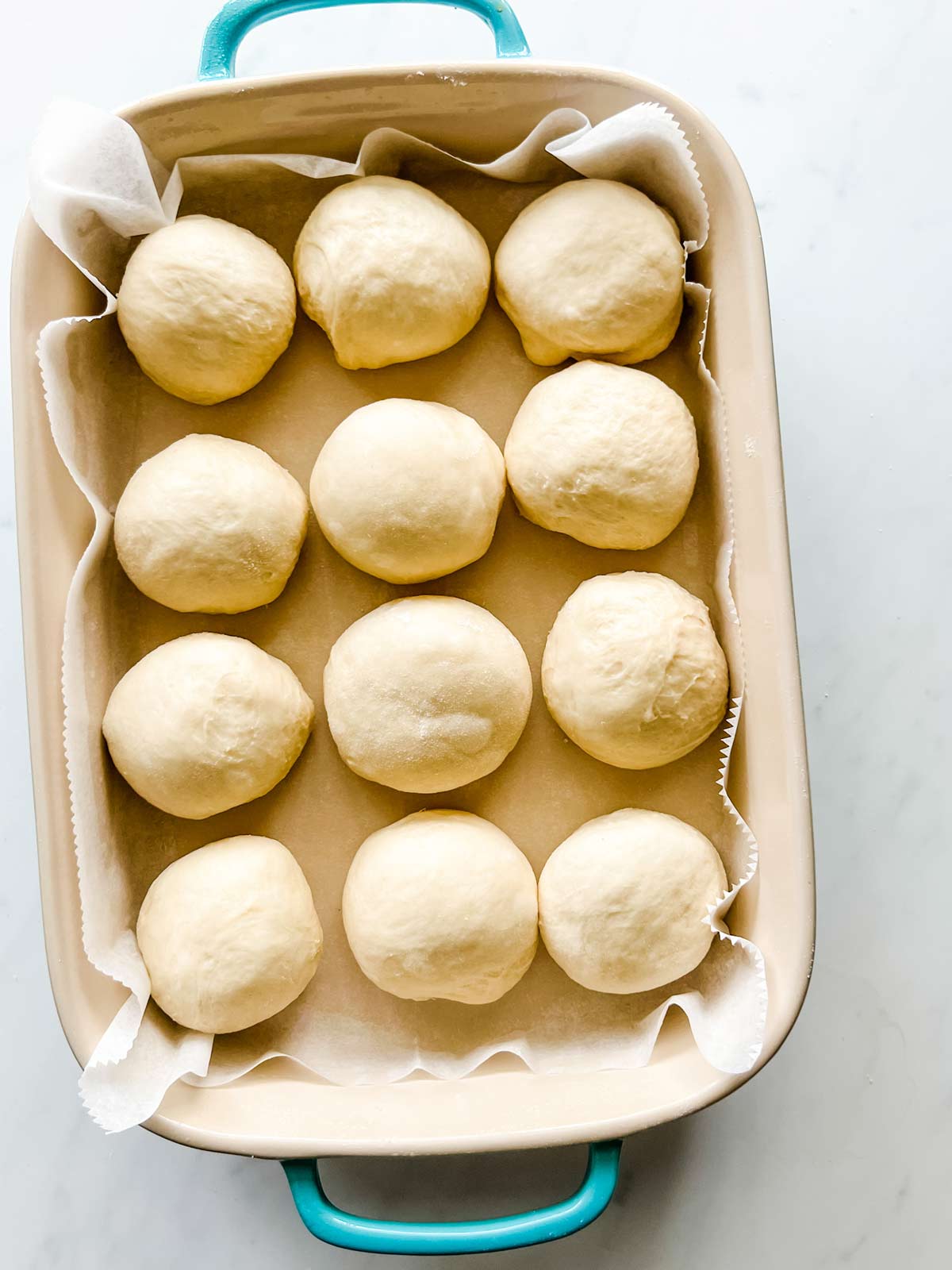
When the bread machine is done, transfer the dough to a work surface. Deflate the dough by gently pressing it. This causes the gluten to relax and allows the yeast to be redistributed.
Divide it into 12 pieces. Cover the dough you aren't working on with plastic wrap.
Form each piece into a bell by stretching and folding the sides over the center of the dough. (Keep the dough that you aren’t working with covered.)
Flip the balls so that they are seam-side down and roll into balls.
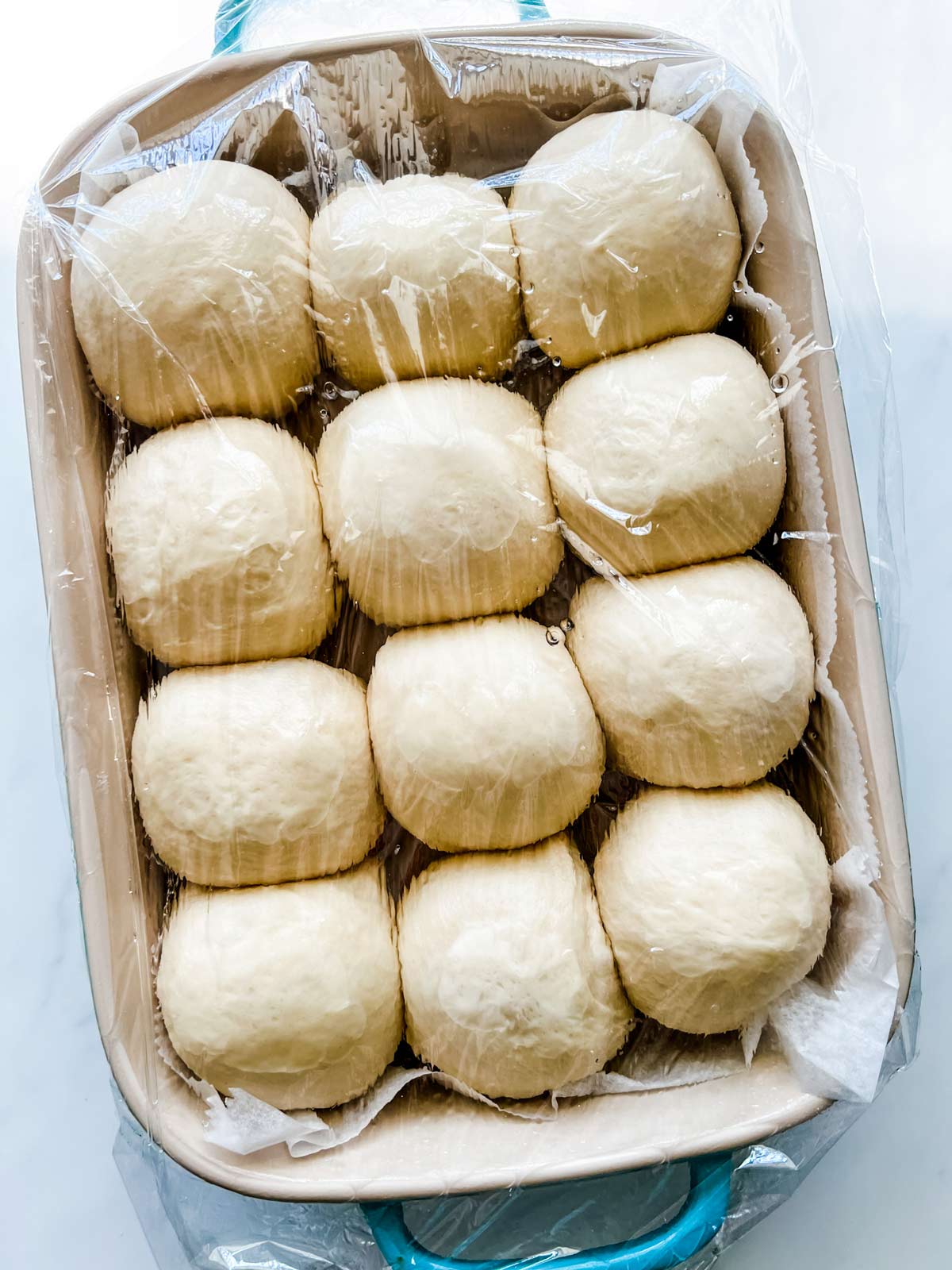
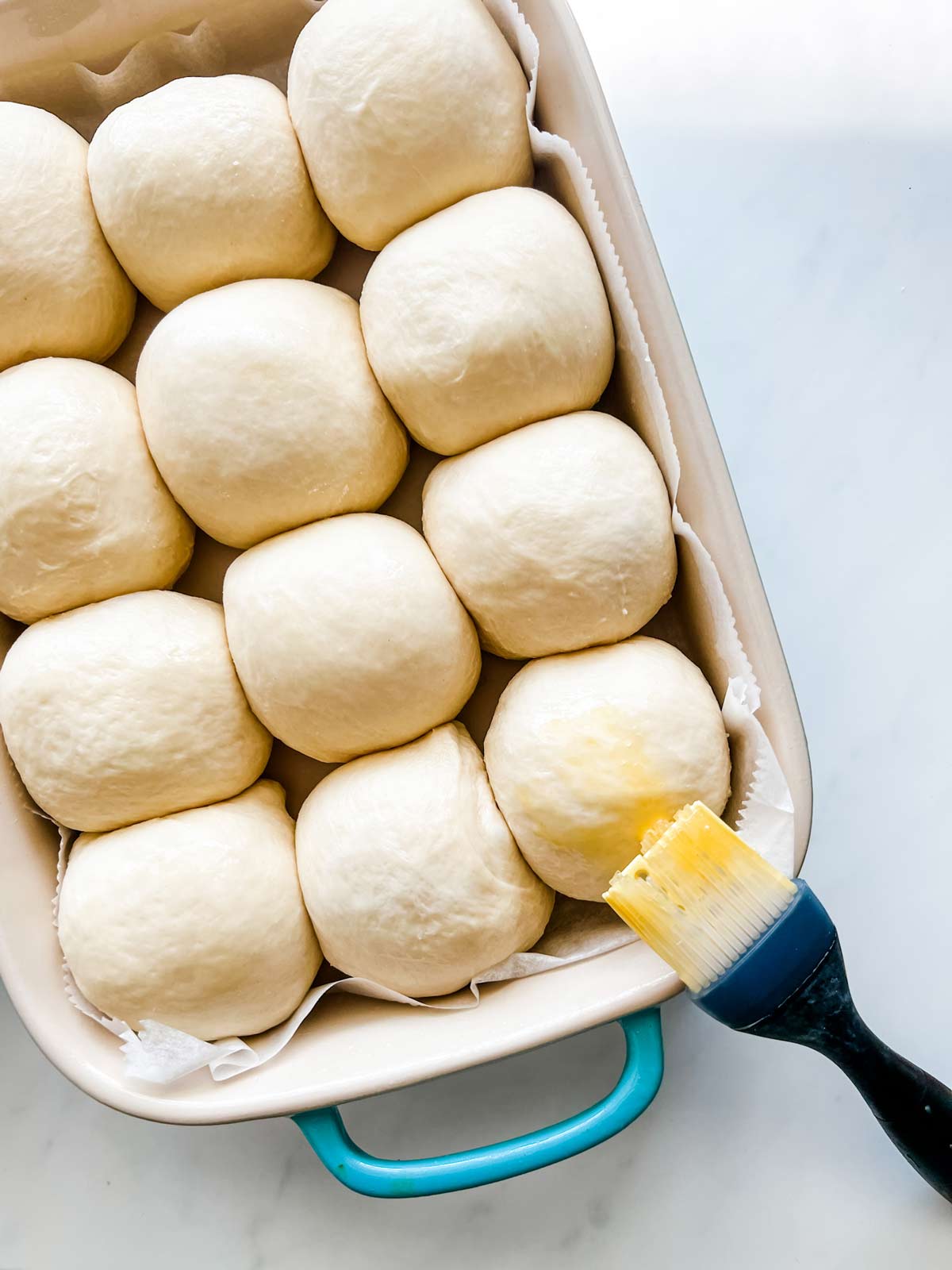
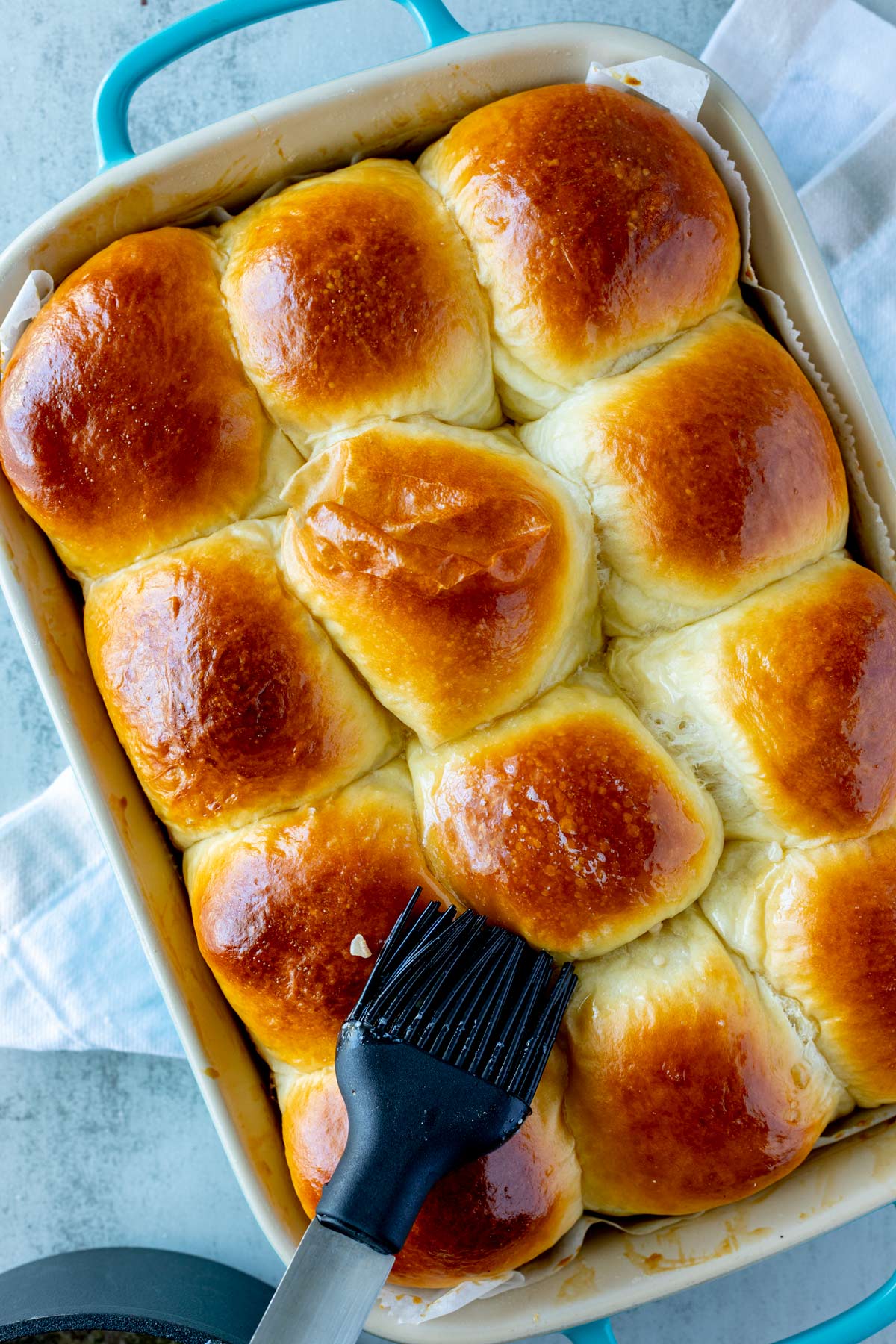
Arrange the balls in the baking dish and cover them with a clean damp kitchen towel. Let rise in a warm place for 45 minutes.
Brush the rolls with the egg and bake for about 30 minutes.
Let the rolls cool in the dish for 15 minutes.
Melt the butter in a small saucepan and add the garlic if desired.
Brush the melted butter on top of the rolls and sprinkle with the flaky salt. Serve warm.
More Bread Recipes to Try
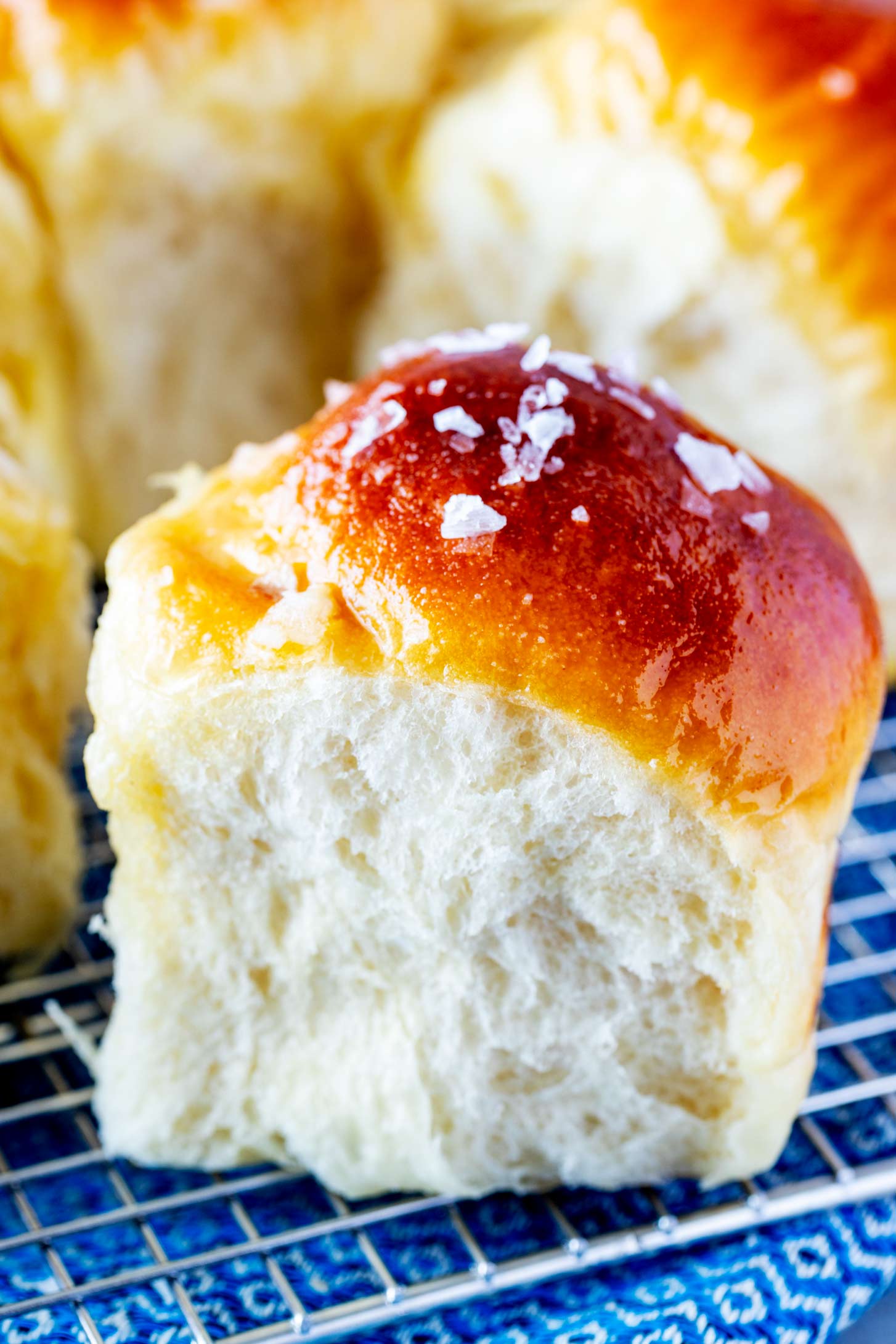
Fluffy and Tender Bread Machine Dinner Rolls
Equipment
- Bread Machine
Ingredients
- 1 ¼ cup whole milk
- 1 large egg beaten
- ⅓ cup honey
- 2 tablespoons vegetable shortening melted
- 1 ½ tablespoons unsalted butter melted
- 1 ½ teaspoons fine salt
- 3 ¾ cups plus 2 tablespoons bread flour
- 2 ¼ teaspoons bread machine yeast instant yeast
- 1 egg beaten
- For Topping
- ¼ cup butter melted
- 1- 2 teaspoons minced garlic optional
- Flaky salt
Instructions
- Place the milk, egg, honey, vegetable shortening, butter, salt, flour, and yeast in your bread machine.
- Process on the dough cycle according to the manufacturer’s instructions.
- Line a 2 ¾ quart baking dish with parchment paper.
- Divide the dough into 12 pieces and cover with plastic wrap. Shape the pieces into balls by stretching and folding the sides over into the center of the dough.
- Flip the balls so they are seam side down, and roll them into balls.
- Arrange the balls into the baking dish. Cover with a damp towel and let rise in a warm place for 45 minutes.
- Preheat the oven to 350° F.
- Brush the rolls with the egg. Bake for 25 to 30 minutes, rotating the pan halfway through.
- Let the rolls cool in the dish for 15 minutes, and then transfer to a wire rack.
- Melt the butter in a small pan. If desired, add the garlic and stir well.
- Brush the butter on top of the rolls and sprinkle with flakey salt.


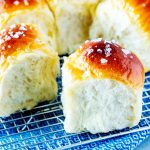
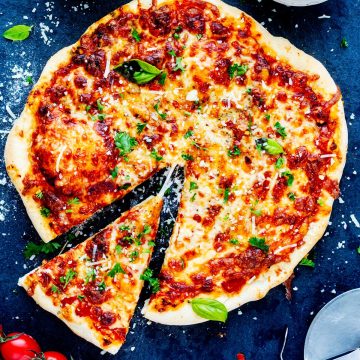
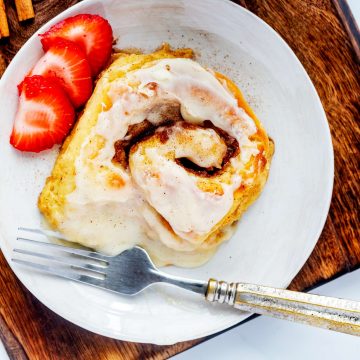
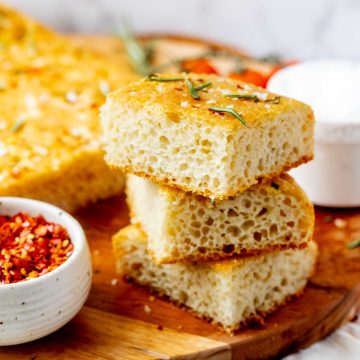
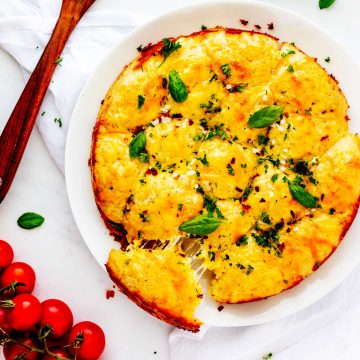
Sunny
Hi Wendy, can we just leave this in the bread machine and let it bake into a nice loaf? what setting, pls.
Wendy Polisi
I have honestly never tried that so I don't know. It doesn't really have a bread loaf consistency - my kids call these "puffy rolls" - so I am not sure how that would work.
Brijet
These are hands down the most fluffy and delicious rolls we have ever eaten! Unbelievable! So glad to have come across them on your site -- we will NEVER use another recipe for rolls again. Thank you over and over!
Brijet
Never have we enjoyed rolls so much as these! They are perfectly tender and fluffy and delicious — a joy to serve to my family. The Maldon salt is the perfect topping. I make them just as the recipe states — almost always in the big roll size but have also cut into smaller size to serve at large family events when smaller is sometimes better. These are awesome — an absolute keeper. I no longer have to look for a roll recipe again because this one is IT!
beth
Can I use melted butter instead of melted shortening?
Wendy Polisi
You could. It will change the texture slightly but it will still be great.
Martha C
These rolls are amazing the best I have ever made!
Wendy Polisi
I am so glad you enjoyed them! They are a favorite around here too!